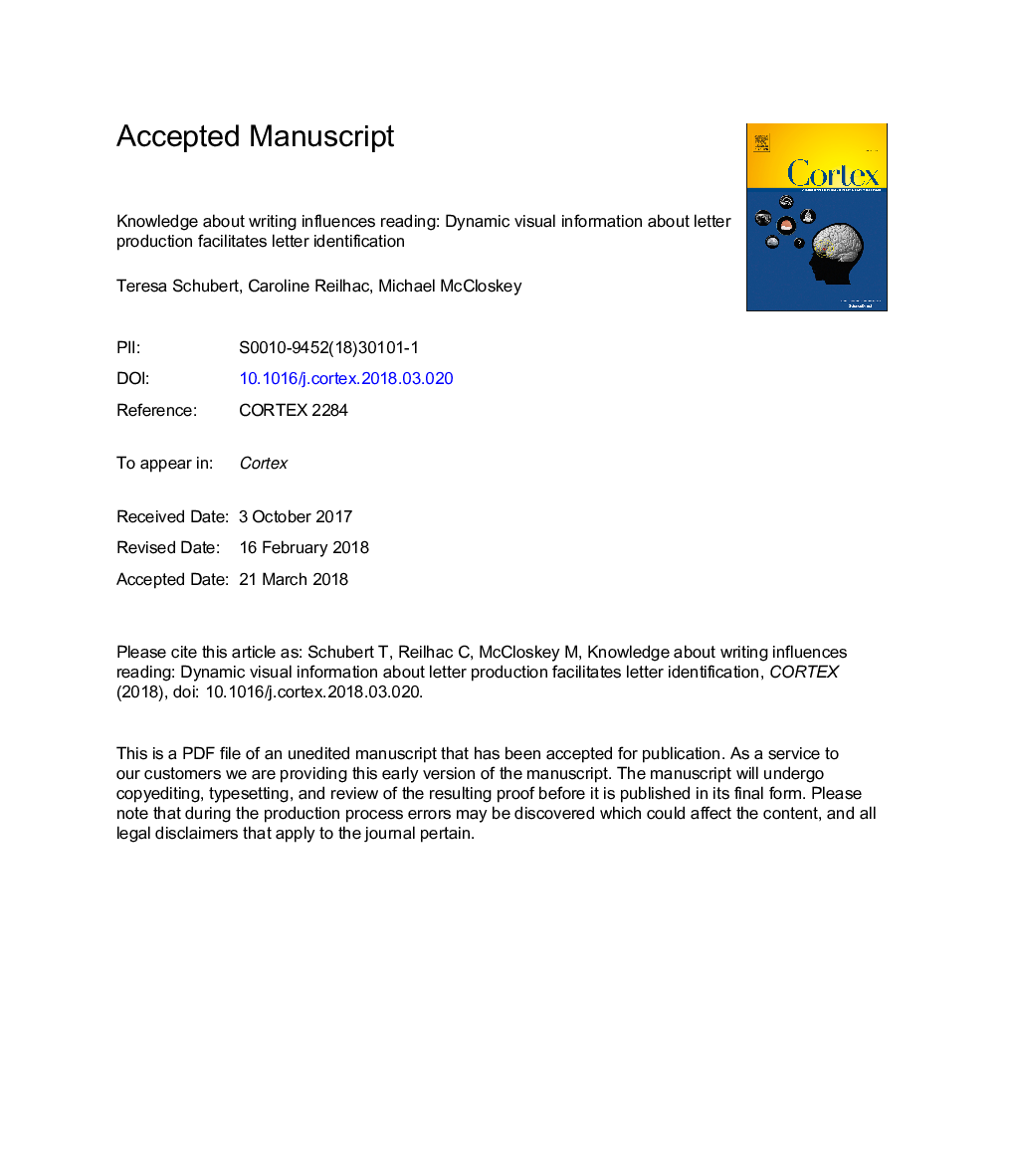| Article ID | Journal | Published Year | Pages | File Type |
|---|---|---|---|---|
| 7311633 | Cortex | 2018 | 45 Pages |
Abstract
How are reading and writing related? In this study, we address the relationship between letter identification and letter production, uncovering a link in which production information can be used to identify letters presented dynamically. By testing an individual with a deficit in letter identification, we identified a benefit which would be masked by ceiling effects in unimpaired readers. In Experiment 1 we found that letter stimuli defined by the direction of dot motion (tiny dots within letter move leftward, background dots move rightward) provided no advantage over static letters. In Experiment 2, we tested dynamic stimuli in which the letter shapes emerged over time: drawn as they would be written, drawn in reverse, or with the letter shape filled in randomly. Improved identification was observed only for letters drawn as they are typically written. These results demonstrate that information about letter production can be integrated into letter identification, and point to bi-directional connections between stored letter production information (used for writing) and abstract letter identity representations (used in both reading and writing). The links from stored production information to abstract letter identities allow the former to activate the latter. We also consider the implications of our results for remediation of acquired letter identification deficits, including letter-drawing treatments and the underlying cause of their efficacy.
Related Topics
Life Sciences
Neuroscience
Behavioral Neuroscience
Authors
Teresa Schubert, Caroline Reilhac, Michael McCloskey,
